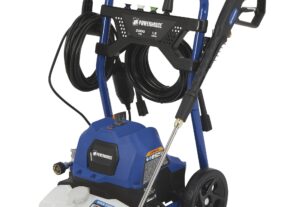If you are looking for a reliable and efficient way to secure your cargo, then a metal banding tool is the perfect solution for you. This versatile tool can be used in various industries, from construction to shipping, to keep your goods safe and secure during transportation.
In this article, we will discuss everything you need to know about metal banding tools, including their benefits, types, and how to use them effectively.
Benefits of Using a Metal Banding Tool
Using a metal banding tool has numerous benefits. Here are some of the most significant advantages of using a metal banding tool:
1. Security: A metal banding tool ensures that your cargo is securely fastened and won’t move around during transportation. This means less damage to your goods and a safer journey for everyone involved.
2. Durability: Metal bands are incredibly durable and can withstand harsh weather conditions, making them ideal for long-distance transportation.
3. Versatility: Metal banding tools can be used on a wide variety of materials, from wood to plastic, making them an excellent choice for all kinds of cargo.
4. Cost-Effective: Metal banding tools are relatively affordable compared to other securing methods such as shrink wrapping or strapping.
Types of Metal Banding Tools
There are several types of metal banding tools available in the market today. Each type has its unique features and benefits. Here are some common types of metal banding tools:
1. Manual Tensioner: As the name suggests, manual tensioners require manual effort to tighten the bands. They are easy to use and suitable for lighter loads.
2. Pneumatic Tensioner: Pneumatic tensioners use air pressure to tighten the bands quickly and efficiently. They are ideal for heavier loads that require more tension.
3. Battery-Powered Tensioner: Battery-powered tensioners are suitable for medium to heavy loads and require minimal manual effort. They are ideal for those who prefer a more automated approach.
4. Sealers: Sealers are used to crimp the edges of the metal bands together, sealing them tightly. There are several types of sealers available, including manual, pneumatic, and battery-operated.
How to Use a Metal Banding Tool
Using a metal banding tool may seem complicated at first, but it is relatively easy once you get the hang of it. Here’s how to use a metal banding tool:
1. Select the right tool for your cargo: Choose a metal banding tool based on the weight and size of your cargo.
2. Wrap the band around your cargo: Wrap the band around your cargo and tighten it using a tensioner.
3. Crimp the ends together: Use a sealer to crimp the ends of the band together securely.
4. Cut off any excess band: Use a cutter to trim any excess band that is sticking out.
5. Inspect your work: Once you have secured your cargo, inspect it carefully to ensure that everything is secure and tight.
Conclusion
A metal banding tool is an essential tool for anyone involved in transportation or shipping. It offers numerous benefits, including security, durability, versatility, and cost-effectiveness. There are several types of metal banding tools available in the market today, each with its unique features and benefits. To use a metal banding tool effectively, choose the right tool for your cargo, wrap the band around your cargo, crimp the ends together using a sealer, cut off any excess band, and inspect your work carefully.
References:
https://en.wikipedia.org/wiki/Banding_tool
https://www.thomasnet.com/articles/materials-handling/types-of-strapping-tools/




